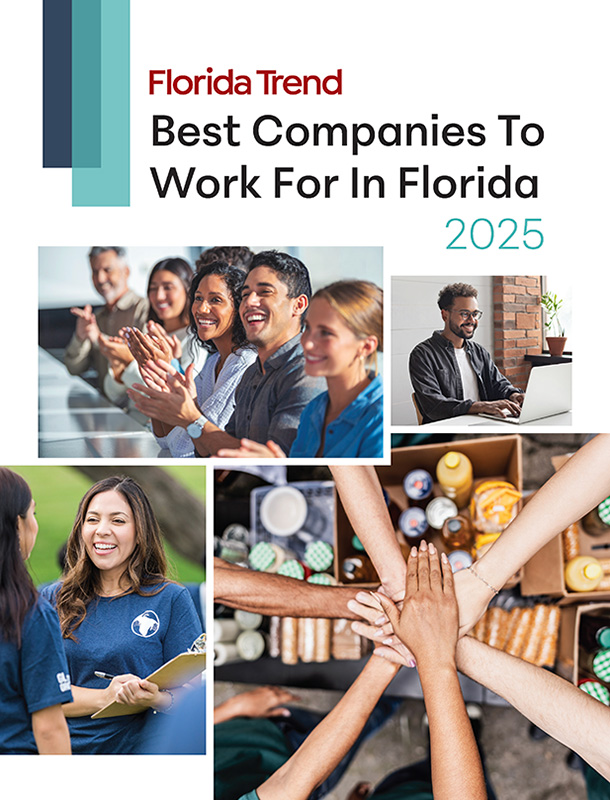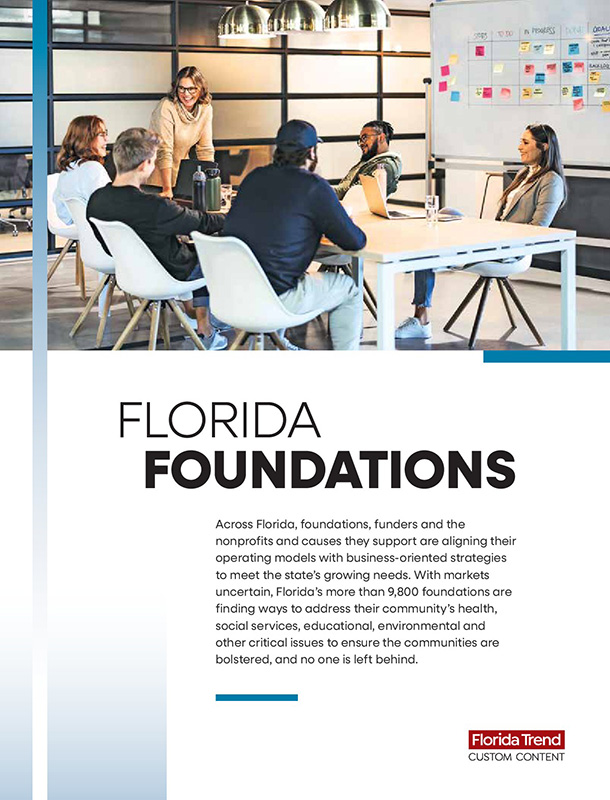Ashley Malin’s scientific sleuthing began with a water bottle.
“Don’t drink that,” she recalls a family member telling her during her undergrad years at Toronto’s York University. “There’s fluoride in it.” “And I said, ‘Yeah, it’s good for your teeth. What’s wrong with that?’” “It lowers IQ.”
“I was like, ‘No, it doesn’t.’”
A high-achieving psych major, Malin set out to prove her point. She didn’t quite make it. True, authorities agreed fluoridation was safe and effective. Yet she found studies from China and other places with high, naturally occurring fluoride in water that showed an association with lower IQ. But not from Canada, nor the United States. She also found a Massachusetts study on rats that developed ADHD-like behavior after being exposed to fluoride. “I thought, huh, OK, I guess there is something to this. So I was kind of intrigued, but then I forgot about it. Kind of moved on.”
Lots of people moved on in the 80 years since communities across the United States and Malin’s native Canada started fluoridating water. Up until recently, some 15 million Floridians across 29 counties and 209 million Americans overall drank fluoridated tap water.
It’s helpful to remember how terrible people’s teeth were before fluoridation. One in five Americans born early in the 20th century lost all their teeth by the time they reached their mid-40s and mid-50s. A leading reason that the military in both world wars rejected young men for service was for lacking six opposing teeth.
In what became a celebrated public health story, dentist Frederick McKay in 1901 moved to Colorado Springs and discovered locals inexplicably had brown-stained teeth that, equally inexplicably, were resistant to cavities. McKay with the help of others eventually identified fluoride as the cause. The mineral can be common in soil and water. Jacksonville, for instance, doesn’t add fluoride because the water it draws from the Floridan Aquifer contains plenty.
Scientists hypothesized fluoride in water went through the blood stream to teeth where it inhibited bacteria, thwarted demineralization and helped remineralization. Authorities conceived a grand experiment: Inject enough fluoride into drinking water to combat cavities but not enough to cause more than very mild staining. In 1945, Grand Rapids, Mich., became the first city on Earth to fluoridate.
Smiles literal and figurative followed. Authorities announced fluoridation cut the incidence of cavities 50% to 70% in children.
While fluoride can be toxic in large amounts, the dental success muted concerns about its impact on bones, glands and the body. The remaining opponents found themselves parodied as crackpots, as in 1964’s satirical film Dr. Strangelove. (The general who launches nuclear doomsday deems fluoridation “the most monstrously conceived and dangerous Communist plot we’ve ever had to face.”)
Some communities chose not to fluoridate — much of Europe also took a pass — but fluoridation overall came to exemplify can-do America. Gainesville in 1949 became the first in Florida to fluoridate. Tooth decay went from scourge to preventable disease thanks to cheap and equitable fluoridation, benefitting children of means and children without. Supporters touted the savings on dental health spending. Boomers had the best teeth in history. The Centers for Disease Control and Prevention lists fluoridation among the 20th century’s top 10 public health achievements along with vaccines, birth control and recognizing tobacco as a health hazard. Case closed.
But, as was true of Malin’s youthful stab at refuting a fluoride-IQ nexus — not quite.
A PROMISE, A PROJECT
Malin grew up near Toronto. Her father owned a store. She thought of following her mother into acting and modeling. Then a health scare in her teens sank her into a month-long depression. The experience aroused such empathy in her, she says, that she decided to become a psychologist to help others.
In her third year at York, she had more than a scare. She was diagnosed with lupus. Nonetheless, she won prizes for the highest GPA in the psych program, earned a bachelor’s with honors and started on a master’s degree. After her first year of grad school, she was in bed 14 hours a day, struggling to function with arthritis in her hands and a loss of saliva that made eating and speaking difficult. With no family history of lupus or any serious illness in youth, she wondered about an environmental cause. She didn’t, then or now, think fluoride responsible. But she happened again on that rat experiment. Incredulous that no one had followed up with a human study, she promised herself that if she got well, she would.
Though “literally the last person” to believe in alternative therapies, she connected with a doctor of Chinese medicine and after two years of treatment was symptomfree in 2012.
She pursued a doctorate. Her dissertation was on therapist empathy in psychotherapy for depression. York, it happened, also required an unrelated research side project. She hadn’t forgotten her promise.
Malin’s advisor sent her to psych department colleague Christine Till, who had done research on prenatal exposure to environmental substances. “She is very motivated,” Till says. “Ashley literally just knocked on my door that same day. ‘Can we chat about a project?’ I was pretty skeptical at the time.” Till was intrigued by Malin’s proposal. “I had no idea there were unanswered questions in fluoride.”
Malin in 2013 started a study of U.S. Centers for Disease Control data on state fluoridation compared to the prevalence of ADHD diagnoses by state. She found an association — that is, a statistical correlation. Till was on break in Mexico in 2015 when the peer-reviewed study appeared in the journal Environmental Health. “My inbox just exploded,” Till says. Newsweek interviewed Malin. Her ability to present her findings “in a professional and polished manner is quite notable,” Till says.
Till nominated Malin for York’s Norman Endler Research Fellowship in Psychology Award. “This was her creation. Her idea. She executed it from beginning to end. It’s significant for public health,” Till says. Malin, the award and Ph.D. in hand, left Canada in 2016 for postdoctoral work.
A DEBATE HEATS UP
Coincidentally, the year Malin’s study came out, the U.S. Public Health Service acknowledged its recommended fluoride level was too high. Some 41% of teens had staining. Federal health authorities for decades recommended a range: In warm places such as Florida, where presumably people drank more water, the recommended dose was 0.7 parts per million — or 0.7 milligrams per liter — and up to 1.2 ppm in cooler climes. The health service, given the staining, cut the optimal level to a uniform 0.7 nationwide.
Meanwhile, fluoridation contention resumed in force as people became more concerned about food additives, skeptical of authorities and attuned to individual choice. Anti-fluoridation ranks included consumer activist Ralph Nader, politicians, greens, libertarians and the early shoots of what became Make America Healthy Again. Robert F. Kennedy Jr., later President Trump’s Secretary of Health and Human Services, called fluoride “poison.” In 2011, commissioners in Pinellas County, which had only started fluoridation in 2004, abandoned it. (Pinellas resumed fluoridation the following year when anti-fluoridation commissioners got bounced from office. Florida Trend’s sister publication, the Tampa Bay Times, won a Pulitzer Prize in opinion writing in 2013 for its pro-fluoridation editorials.)
New insights enabled fluoridation foes to label the practice obsolete and risky. Dental health improved in places that never fluoridated. Research indicated fluoride works best topically — bathing the teeth with fluoride rather than through the bloodstream. Crest, the first fluoride toothpaste, hadn’t come out until 1956. Today, shoppers have abundant fluoride product choices along with fluoride treatment at the dentist.
The CDC, which supports fluoridation, says fluoridation cuts cavities by 25%, not the upward of 70% reported early on. Some research indicates fluoridation’s benefit isn’t even that high. The European Commission finds no “obvious” advantage to fluoridation over topical use given the risks of overexposure.
Till and Malin, among others, took an in-depth look at overexposure. Fluoride exposure can be driven up by consuming lots of water, black tea, some seafoods, foods and beverages made with fluoridated water, baby formula mixed with fluoridated water and by toothpaste and mouthwash use.
Till, inspired by her work with Malin, did a National Institutes of Health-funded study that found an association between fluoride levels in pregnant women’s urine in Canada and lower IQ in their children. Worrying research like that received amplification from activists like the “Fluoride Action Network” started in 1996 by retired Dartmouth chemistry professor Paul Connett and his wife, Ellen. Their other contribution to the anti-fluoridation campaign: A son, Michael, who told Florida Trend he took up the anti-fluoridation cause in New York around 2000.
Michael Connett, a lawyer, is important because in 2017 in federal court in California — on behalf of Washingtonbased Food & Water Watch — he sued to force the EPA to increase fluoride regulation under the federal Toxic Substances Control Act. Malin would figure in that litigation.
“Ashley just literally just knocked on my door that same day. ‘Can we chat about a project?’ I was pretty skeptical at that time.” — Christine Till, clinical neuropsychologist at York University
As a post-doc, she went to New York to study environmental medicine and public health at the Icahn School of Medicine at Mount Sinai. While there — following a study she did with Till on fluoride and the thyroid — she did studies on fluoride and the kidneys, sleep and women’s reproductive health. In 2021, Malin won a National Institutes of Health Pathway to Independence Award given to promising scientists to fund their research and prepare them for faculty positions.
That year she began a post-doctoral fellowship at the University of Southern California’s Keck School of Medicine. There, she was able to tap into its cohort study of pregnant Los Angeles women and their children and their exposure to environmental and social stresses.
Malin used the data to examine the fluoride level in the women’s urine. In a second study, she looked for a link between fluoride levels in their urine and their children’s neurological health.
As she worked on those, a job hunt brought her to the University of Florida in 2022 as an assistant professor in epidemiology. Her NIH grant money launched her Fluoride Aluminum Brain and Behavior Lab — or “FABB Lab” — where several “wonderful” young scientists research, she says.
In late 2023, her first Los Angeles study came out. She found pregnant women’s urinary fluoride levels similar to those in Till’s Canada study and a Mexico study that showed an association with lower IQ. Her second Los Angeles study, published in 2024, linked high fluoride levels in pregnant women to increased odds of their kids having neurobehavioral problems.
The women had a median fluoride level in their urine of .76 ppm — slightly higher than the drinking water recom mended level. The median, of course, means half the women had more, half less. She compared women with just .5 ppm of fluoride in their urine to those with 1.2 ppm. The higher amount correlated statistically with nearly double the odds of neurobehavioral problems in children at age 3 — “things like anxiety, symptoms of autism, emotional reactivity. So temper tantrums and somatic complaints — things like stomach aches or headaches that didn’t have a known medical origin,” Malin says. “I think that it’s a good idea for pregnant women to reduce their fluoride intake, and for parents of babies and young children to be vigilant about reducing their child’s fluoride intake as well.”
The NIH’s environmental health sciences institute named her study a 2024 “Paper of the Year” — one of 30 out of 3,200 papers. The NIH, in its online fluoride “Fact Sheet for Health Professionals,” includes a citation of her study along with a contradictory study from Australia that found no harm.
A COURT WEIGHS IN
Meanwhile, the NIH’s National Toxicology Program was conducting a sweeping analysis of many fluoride studies, including Malin’s first Los Angeles one (though not her second one, which came too late.)
The toxicology analysis in 2024 concluded with “moderate confidence” that exposure to water fluoridated with more than 1.5 ppm is associated with lower IQ in children.
The finding had import for the next development. Edward Chen, the federal judge in Connett’s EPA suit, had been awaiting that toxicology finding. In all, he heard 17 days of testimony, reviewed a slew of studies (including Malin’s first Los Angeles study) and the toxicology finding. In September, Chen ruled fluoridation at the U.S. level represents an “unreasonable risk of injury to health of the public.” He said there’s no certainty of injury, but fluoride “poses an unreasonable risk of reduced IQ in children.” He ordered the EPA to take action. Its options run from a warning label to a ban.
“Eliminating a proven public health strategy to reduce dental disease in a state that has access to care issues is very shortsighted.” — Dr. Brett Kessler, president of the American Dental Association
Chen cited Till’s and Malin’s research as “highly probative” in establishing the amount of fluoride to which pregnant women are exposed. What’s more, because of human variability, EPA policy requires a margin of safety that’s a factor of 10 between what’s hazardous and what an exposure level should be, Chen wrote. Given that 1.5 ppm is hazardous, the safe fluoridation level should be one-tenth of that — around 0.15 ppm, a fraction of the U.S. level — for the sake of pregnant women, the children in their wombs and formula-fed babies. (Breast milk doesn’t have much fluoride.)
Chen said research suggests an IQ drop of 1 point for each 0.28 ppm of fluoride in a pregnant mother’s urine — “highly concerning,” he wrote, given the levels that Malin found: 0.8 at the median to 1.89 in the 95th percentile.
“That ruling captured my attention,” says Florida Surgeon General Dr. Joseph Ladapo. Until then, he supported fluoridation as part of standard public health practice. He dove into the research and was “completely gobsmacked,” he says. He asked Malin for a meeting.
“Her work is quite seminal,” Ladapo says. “She’s one of the leading researchers in this area in the United States.” Before Malin’s Los Angeles study, research on neurological impacts could be dismissed as inapplicable to U.S. levels. He credits her being willing to research in a controversial area and not shy away from findings that defy conventional thinking.
(Ladapo is no stranger to holding controversial views outside the medical consensus. For example, he was publicly contradicted in 2023 by the CDC and the FDA, who accused him by letter of disseminating misinformation and misinterpretations about the safety of COVID-19 vaccines.)
A couple weeks after meeting with Malin, Ladapo in November recommended Florida water systems cease fluoridation due to what he termed the neuropsychiatric risk and the wide availability of other ways to get fluoride for dental health. (Fluoridation at the time was a local government decision in Florida.) He also cited risks of sleep apnea and accumulation of fluoride in the pineal gland, bones and thyroid.
“Shortsighted,” the American Dental Association responded. Fluoridation remains endorsed by authorities from the World Health Organization to the state dental association. The CDC says expert panels haven’t found convincing evidence linking fluoridation to cancer, low intelligence, bone fractures and other maladies. The only documented risk in the U.S. is the mildest teeth staining, the CDC says.
IN THE SPOTLIGHT
Malin spoke at Ladapo’s November press conference. She’s appeared, sometimes with Ladapo, before elected officials from Miami-Dade to small-town Bartow in Polk County. “She’s very good,” says Bartow Mayor Trish Pfeiffer, who has a chronic immune disorder that damages the thyroid and who wanted Bartow to cease fluoridation.
Frequently appearing in fluoridation’s favor is activist and dentist Johnny Johnson, president of the American Fluoridation Society, a five-person group Johnson founded after the Pinellas fluoridation reversal in 2011. Johnson travels the state and nation to argue for fluoridation. “It’s just nonstop now,” Johnson says.
Johnson says studies showing risk from fluoridation “are basically all flawed” and from a “handful of researchers” like Till and her mentee Malin. He says higher-quality research establishes fluoridation’s safety. He cites studies showing the harm to dental health when fluoridation ceases.
Each side in the public policy debate accuses the other of overstating risk and understating benefit. Each calls on people to change personal behavior if concerned. Otherwise, they say, people will suffer — either tooth decay without fluoridation or neuro-cognitive impacts, bone damage and other ills with it.
Nationally and globally, the debate continues. Malin has appeared in media in the U.S., Britain and Australia.
Through April, 14 communities in Florida with a population of nearly 1 million decided against fluoridation. Another 4 million never had it. Others, including Bartow, despite its mayor’s wishes, voted to keep it. The state Legislature in April passed a bill that makes Florida the second state, after Utah, to ban fluoridation. Gov. Ron DeSantis signed it into law in May. Nationally, Health Secretary Kennedy has said the Trump administration will recommend fluoridation cease. EPA Administrator Lee Zeldin in April announced a review of “new scientific information” on potential health risks of fluoride in drinking water.
“It wasn’t even acceptable to raise the question 10 years ago, and now this is really at the forefront of public health discourse,” Malin marvels.
She is finishing a study on prenatal fluoride exposure and babies’ neurodevelopment at six, nine, 12 and 18 months. She says research is needed on fluoride, aluminum — which can occur in fluoridation chemicals — and the body. She’s pursuing a grant for a U.S. study on fluoride and bone fracture risk.
In August in Atlanta, at a joint meeting of two environmental health groups, the International Society of Exposure Science and the International Society for Environmental Epidemiology, she will co-chair a series of presentations on fluoride with the lead author of the NIH toxicology finding. Scientists from her FABB Lab have done work on liver and kidney function and fluoride and will present new research on fluoride exposure and neuro-cognitive outcomes, including on adults.
Malin, by the way, didn’t quite abandon her dream of clinical psychology. She has a small, online practice. But her goal of helping people, for the most part, is now done through studies. “Life really just took me in a different direction,” she says.
Strange Bedfellows
Food and Water Watch, the group that successfully sued the EPA to force it to increase regulation of fluoride, is hostile to President Trump but is aligned with Trump Health and Human Services Secretary Robert F. Kennedy Jr. on fluoride. New Jersey, among the bluest of blue states, has the lowest percentage of residents on fluoridated systems of any state at 16% as of 2022, the most recent year available from the CDC. Red state Florida had 15 million people getting fluoridated water. That equated to 78% of the people who got water through a water utility. Florida ranked 23rd nationally by that percentage and first among the five most populous states. The national figure is 72%.













